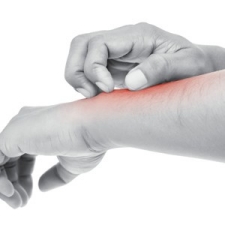NORMAN, OKLA. – A new University of Oklahoma study could have implications on our understanding of how certain sensory signals are transmitted through the body. An OU experiment led by neuroscientist Christian Lemon, Ph.D., Department of Biology, set out to discover how menthol’s irritant sensation is transmitted by the nervous system.
Menthol, perhaps best-known as the cooling agent in peppermint, has a cooling sensation when diluted, but can be an irritant at elevated concentrations. The study focused on menthol’s interaction with an ion channel known as TRPM8. This channel is associated with menthol, as it is often described as a menthol detector, and is the primary channel that functions as a sensor of cold.
However, genetically engineered mice deficient in TRPM8 did not show significant differences in how they reacted to licking mentholated water from a control group. Instead, mice deficient in a different channel – TRPA1 – did. The TRPA1 channel is more of an “alert” channel – it is known as a sensor for environmental irritants that gives rise to responses such as pain or itching.
For this study, mouse-licking responses were measured in special devices that capture behaviors controlled by sensations arising from the tongue and mouth. The devices record the number of licks and the rate of licking, which both decrease when aversion is present. Control-like decreases in responding to menthol were evident in mice genetically deficient for TRPM8 but not TRPA1.
This data could have implications for how input from TRPA1 and TRPM8 shapes behaviors guided by senses throughout the body. Eventually, understanding these inputs could have implications on everything from the flavor response to pain management.
Grants from the National Institutes of Health and the Oklahoma Center for the Advancement of Science and Technology supported this work.
A link to the paper can be found here: https://www.eneuro.org/content/6/6/ENEURO.0304-19.2019.

